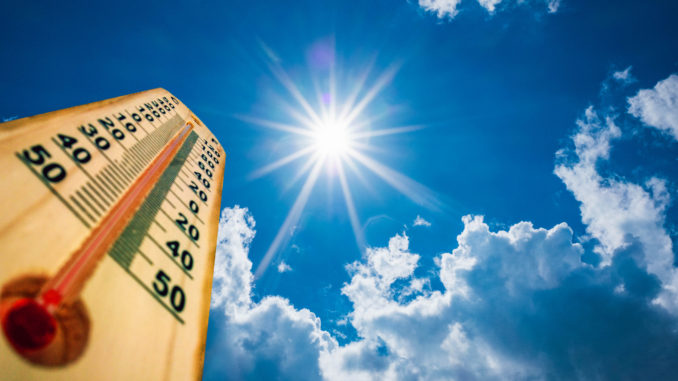
NEW JERSEY—A historic average of just three days over 100 degrees Fahrenheit each year in New Jersey will increase to 24 days by midcentury and 49 by the year 2100, with climate change driving potentially lethal heat in the continental United States, the Union of Concerned Scientists said in a peer-reviewed study released July 16.
“Without global action to reduce heat-trapping emissions, the number of days per year when the heat index—or “feels like” temperature—exceeds 100 degrees Fahrenheit would more than double from historical levels to an average of 36 across the country by midcentury and increase four-fold to an average of 54 by late century,” the nonprofit Union’s study concluded.
“Killer Heat in the United States: Climate Choices and the Future of Dangerously Hot Days” concludes that nearly everywhere people will experience more days of dangerous heat, even by the next few decades.
“By the end of the century, with no action to reduce global emissions, parts of Florida and Texas would experience the equivalent of at least five months per year on average when the “feels like” temperature exceeds 100 degrees Fahrenheit,” according to the analysis.
Meanwhile, Bergen County opened cooling centers throughout the county last week, and recommended people stay indoors from 11 a.m. to 3 p.m. as hot summer temperatures set in.
“All age groups are at risk for heat stroke so please take necessary precautions if you have to be outdoors, including wearing sunscreen, a hat, sunglasses and staying properly hydrated,” a Bergen County information bulletin said.
Related to New Jersey, the Union also concludes:
• “Historically, there have been 22 days per year on average with a heat index above 90 degrees Fahrenheit. This would increase to 61 days per year on average by midcentury and 90 by the century’s end.”
• “By the end of the century, an estimated 900,000 people would be exposed to a heat index above 100 degrees Fahrenheit for the equivalent of two months or more per year. By limiting warming to 2 degrees Celsius, all residents would avoid such days of extreme conditions.”
• “Historically, there has been an average of one day per year with a heat index above 105 degrees Fahrenheit. This would increase to 12 days per year on average by midcentury and 32 by the century’s end. Limiting warming to 2 degrees Celsius above pre-industrial levels would cap the frequency of such days at seven per year on average.”
• “By the end of the century, an estimated 5.4 million people would be exposed to a heat index above 105 degrees Fahrenheit for the equivalent of a month or more per year. By limiting warming to 2 degrees Celsius, all residents would avoid such days of extreme conditions.”
• “Historically, the state as a whole has experienced zero ‘off-the-charts’ heat days in an average year. This would increase to three days per year on average by the end of the century. Limiting warming to 2 degrees Celsius would limit the frequency of such days to zero per year on average.”

